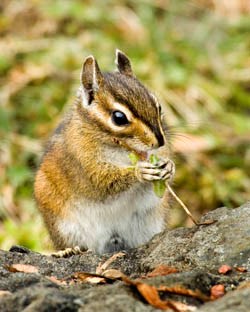
Ken and Mary Campbell Olympic Chipmunk - Tamias amoenus caurinusIdentification: Habitat: Diet: 
Olympic NP Animals
Olympic is home to a wide variety of animals from mammals to mollusks and much more. Learn about them here. 
Ethical Wildlife Viewing
Animals in parks are wild—Visitors are responsible for their own safety and for the safety of the animals, too. 
Bears Are Waking Up. Be Smart About It.
Visit the link to learn how to coexist with wild animals so that you stay safe, and they do too. |
Last updated: April 24, 2025
